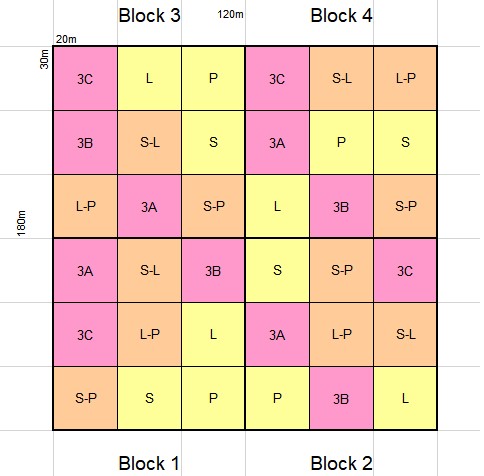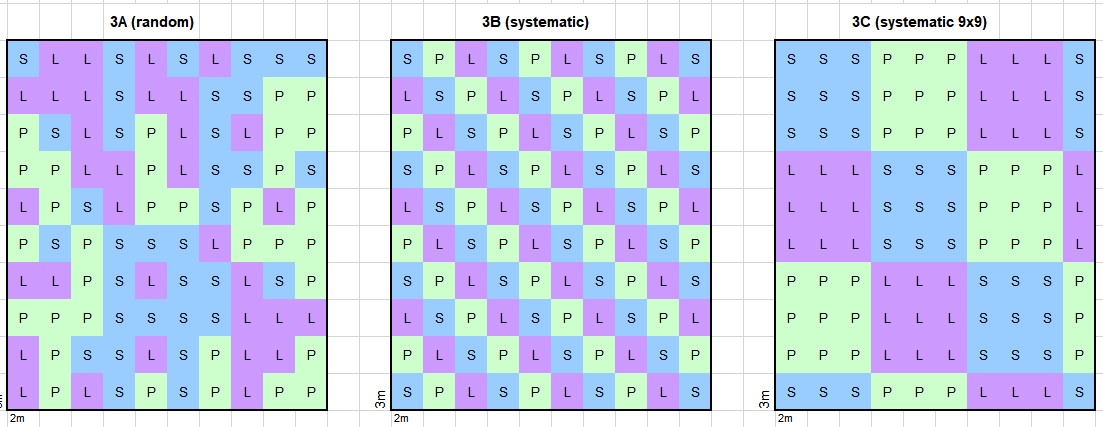Lac-Aux-Brochets
The trees were planted in 2007 on public land in Lac-aux-Brochets sector, after total harvest, close to La Tuque, a town to the north of Quebec city, eastern Canada, in transition biome from temperate to boreal forests. The planted species were hybrid larch, white spruce and hybrid poplar. The principal goal of this plantation is to determine whether productivity is increased with diversity, using high productivity species used in short rotation forestry. Also to investigate wether special arrangement has an impact in 3-species plots.
This trial is linked to the IDENT experiment.
Design
The plantation has nine different treatments (plots) which are repeated using four blocks. Three plots are monocultures of larch, white spruce and hybrid poplar. Three more plots are composed of two out of the three species planted. Finally, three plots are planted with the three species but in one of three spatial arrangements: random, systematic, and in patches.


Site characteristics
| Lac-Aux-Brochets (Canada) | |
|---|---|
| Country | Canada |
| Biome | transition temperate to boreal |
| Latitude | 47.75 |
| Longitude | -72.52 |
| Former land use | forestry |
| Altitude | 215 m |
| Design | stem-wise randomisation, stem-wise regular, patch-wise planting |
| Plot shape | square |
| Plot size (m^2) | 600 m² |
| Plant distance (m) | 2 (in rows) 3 (between) |
| Number of trees planted | 3600 |
| Planting date | 2007 |
| Diversity variables | species richness |
| Size species pool | 3 |
| Species pool | Picea glauca Larix laricina (Populus deltoïdes x P. nigra) x P. maximocwizii |
| Contact person | Alain Paquette |
| paquette.alain@uqam.ca |
Research
The first goal is to determine the effect of diversity using short rotation species. The second goal is to find out if the tree arrangement influences the productivity of the plot. To answer this, three different tree arrangement (Random, systematic, systematic with 9 tree patches) are compared. Answers could help the forest industry adopt and improve mixed plantations in the future.
Extra information
Contact info
For extra information you can send an e-mail to the contact person.